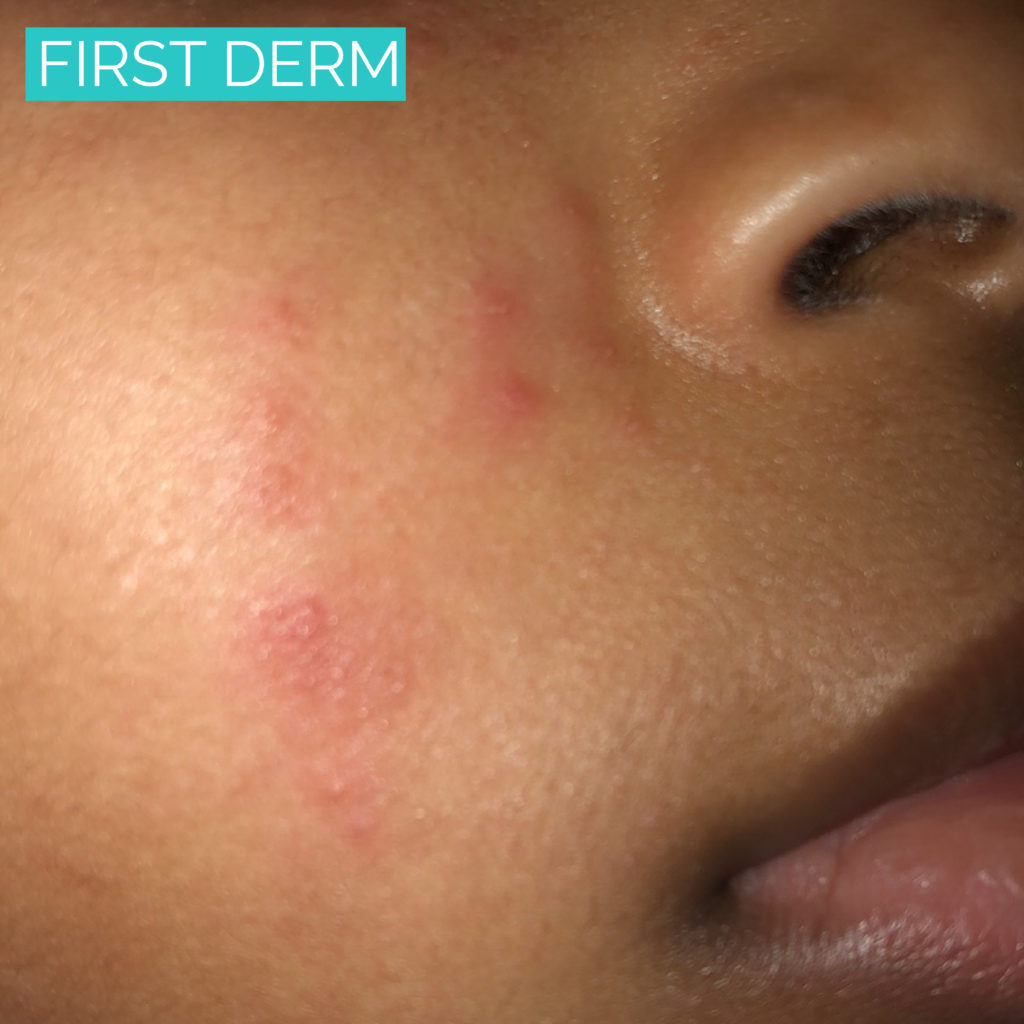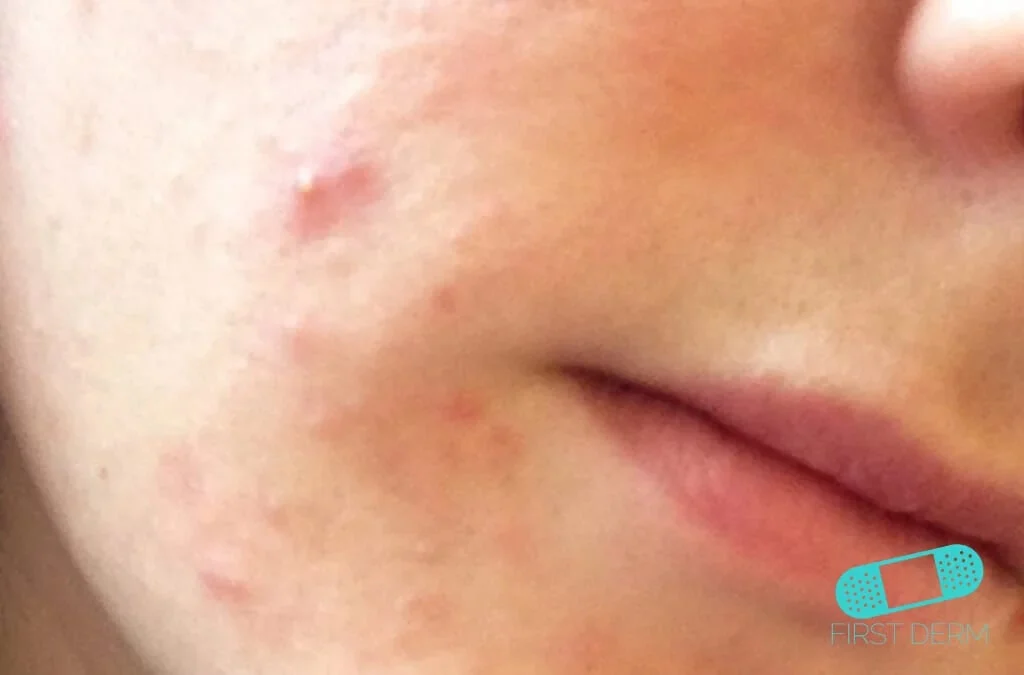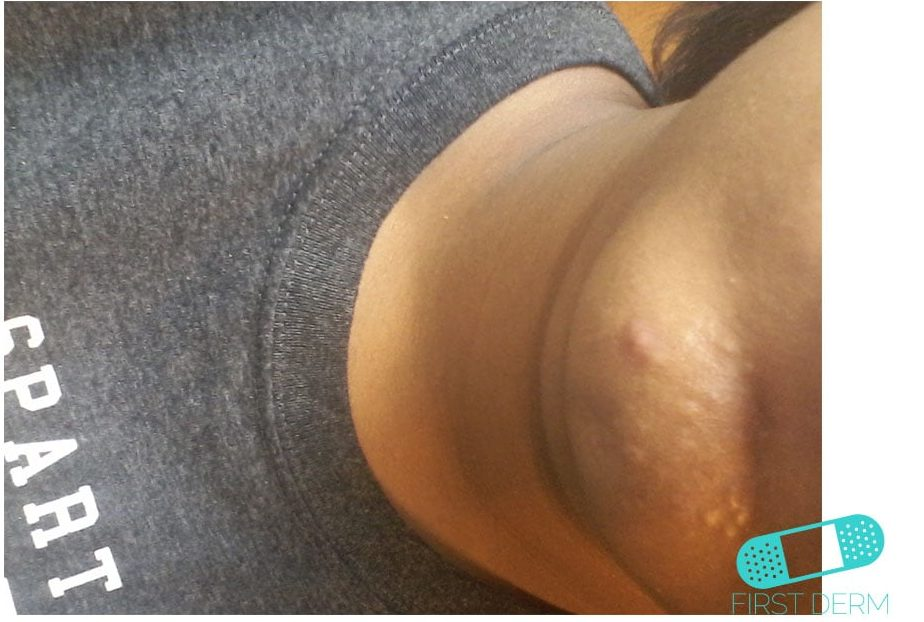ACNE FROM STEROIDS: SHOULD YOU BE WORRIED?
What is steroid acne?
Steroid acne is a kind of acne which occurs due to administration of corticosteroids in any modality. It can occur due to oral steroids, intravenous steroids, or topical steroid creams. It is characterized by a sudden onset of the rash in most cases. There is often a widespread eruption, usually occurring a few weeks after starting the steroid treatment.

Steroid acne
Corticosteroids are important medications which are indicated in the treatment of a wide range of medical conditions, and at times their administration can be life-saving. However, steroid acne is one of the known side effects of these drugs.
People with Cushing’s Disease and Cushing Syndrome have high levels of circulating corticosteroids in their body, and are also susceptible to developing this variety of steroid acne.
Additionally, abuse of androgenic anabolic steroids can exacerbate acne vulgaris and induce severe forms of acne such as acne fulminans or acne conglobate, which is often labelled as steroid-modified acne.
Use of topical corticosteroids on the face, as part of skin lightening creams and treatments, is often unregulated and widespread in many countries around the world. Long term use of topical corticosteroids often leads to a plethora of side effects, especially on the delicate facial skin, including thinning of the skin, loss of pigment, hair growth, acne, and rosacea.
Thus, the spectrum of steroid acne can include a variety of disease presentations, and history taking remains very important in all suspected cases to pinpoint the steroid exposure.
Mechanism of steroid acne:
Acne induction due to steroid administration is partly due to androgen receptor binding in the skin and hair follicles, leading to hypertrophy of the sebaceous glands with consequent increased sebum output and a concomitant increase in the population density of P. acnes. These contribute to the characteristic breakouts of steroid acne.
Features of Steroid-induced acne:
While steroid acne resembles the classical acne (acne vulgaris) at first glance, in reality, there are some differentiating features which can help in differentiating both these eruptions, which would be easily visible to any dermatologist.

Acne Vulgaris
In predisposed individuals suspected of having steroid acne, there is often a sudden onset of follicular pustules and papules 2 to 5 weeks after starting oral corticosteroid treatment.
The lesions of steroid acne differ from those of acne vulgaris in the following ways –
- Uniformly sized spots (monomorphic)
- Symmetric distribution (usually on the neck, chest, and back)
- Comedones may form later

Absence of scarring
They are often 1- to 3-mm, flesh-colored or pink-toned, dome-shaped papules and pustules.
Acne vulgaris, on the other hand, is usually polymorphic, where there is a mixture of the lesions including comedones, papules, pustules, nodules seen at the same time. These develop over months, and gradually increase in severity, and older lesions heal with scarring ahich are intermingled with newer spots.
So, Should I be worried about steroid acne?
The answer to this depends on the reason or disease for which you have been prescribed corticosteroids. Generally, if you have been prescribed steroids for a life-threatening or serious systemic condition, it makes sense to ignore or delay treating any possible skin eruption until you are in better health. However, if the acne is severe, and affecting your lifestyle, it is best to talk to your doctor and possibly discuss other treatment options, especially in chronic diseases.
If the steroid acne is a symptom of an underlying disease or condition, and you are not taking any medications, it is best to get the rash assessed at the earliest.
If you are using topical steroid creams without medical supervision for long, and notice an outbreak of acne, it is important to seek advice from a doctor or dermatologist as there may be other long-term effects on the skin due to the steroid use. It is never advisable to use any creams or medications without prescription and medical supervision.
Should I seek medical advice?
Yes, steroid acne can start suddenly and be quite widespread, it needs to be assessed and treated by a medical professional.
What can I do?
While you wait for the rash to settle, you can start using an over the counter benzoyl peroxide face wash twice daily for 30-60 seconds to wash the affected areas.
Treatment:
Steroid acne usually resolves completely once the drugs causing it are stopped. However, occurrence of this eruption is not a contraindication to steroid use, and steroids may be used again in future if indicated.
If it is not possible to stop the steroid treatment, the eruptions can be treated with the following medications –
- Benzoyl peroxide soaps and bodywash
- Topical benzoyl peroxide creams for overnight application
- Topical antibiotics such as clindamycin
- Topical sulphur lotion
These usually help to reduce the intensity and severity of symptoms and a good response is seen within 2-4 weeks of starting treatment.
Sources:
Ask a Dermatologist
Anonymous, fast and secure!

Dr Aayushi Shah is a practising dermatologist from India, currently based in the UK. She has 5 publications has authored chapters covering a wide range of topics, including chronic urticaria, psoriasis, and skin moisturisers. She also works as a Medical Editor, and enjoys blogging in her free time.


